With a waiting list of up to seven years the Imana Wild Ride is an adventure laced with legend and mystery. But it’s no secret that the country’s oldest and most sought after stage race takes place in a raw and rugged landscape of jaw-dropping beauty. So when Nic Lamond got the call up, he jumped.
By Nic Lamond
Photos: Jon Ivins
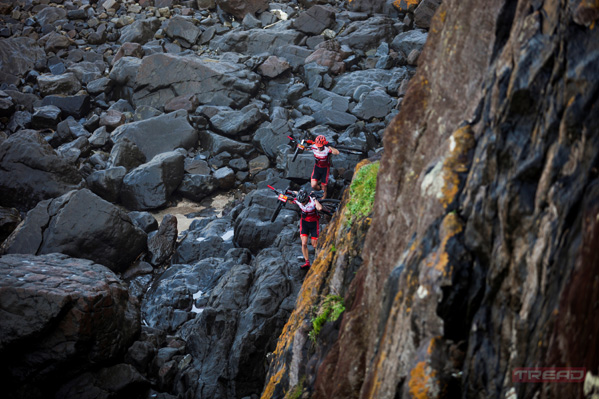
As we pedaled against the gradient of the brick pathway and under the Imana finishing banner at Kob Inn my bike was making noises I’d never heard before. And this was just the first stage…
Moments earlier, for the first time in my life, I’d pedaled across a flowing river mouth as it scoured the beach, pulsing towards the sea and hitting the breakers. I was up to my ankles, creamy sand churned up beneath me, salt water spraying everywhere. A pang of guilt shuddered through my body as I glanced down at my carbon dual-suspension race weapon getting a sand and salt enema. No wonder it was whining.
My riding partner Craig Woods meanwhile, had neatly unclipped behind me, slung his bike over his shoulder and waded across the Qora river. He was remounted and spinning up the beach towards the resort finish line in a single fluid movement. ‘Woodsy’ was the veteran, I was the rookie and this river crossing was just another of his lessons in navigating the spectacular and unforgiving Wild Coast.
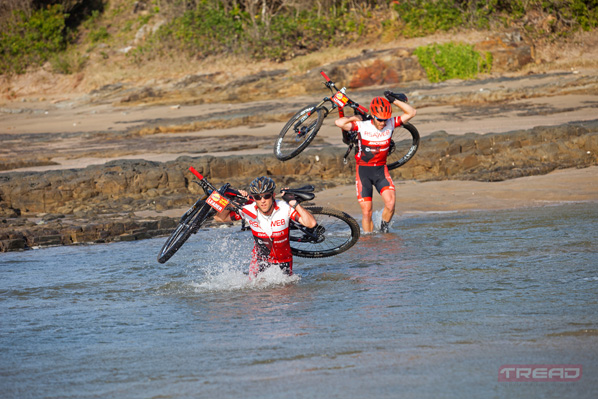
Woodsy is a Cape Town local and master of 15 Imana Wild Rides (there have been 16 events in total since 2000) and countless recces. He’s part of the Imana furniture and dispenses sage route advice and trash talk in equal measure. He’s also a recreational chopper pilot who has done hours in the sky surveying the myriad coves, hills, shelves and beaches that make up the route.
The Imana Wild Ride covers less than 200km over four days as it heads north from the Great Kei River to the Umngazi River. It doesn’t sound like much. But this is not a bike race about distance and time. This is about survival. As the event drew nearer the pre-race banter and rumours had intensified: Woodsy had been in a secret training camp since March. He had dropped flour bombs from his chopper to mark turns out in the bush. He was trialing a specially modified lightweight fatbike to dominate the sand sections. Most alarmingly, there were rumours that he had contracted a super-fit newcomer as his partner (me!).
None of this was true, of course. In fact, this was the first year that Woodsy hadn’t done his usual multi-day recce of the Wild Coast. And we were hardly a crack two-man racing team. We have been mates for a while, but from a distance. Woodsy rode the inaugural Joberg2C with my brother years ago. Our first training ride together was a meager 15km loop, a week before the race on the lower slopes of Table Mountain. Our second ride was also our only recce – the first 12km of Stage 1, on 1 August the day before the Imana. It mostly involved me struggling to hold Woodsy’s wheel through soft sand. And freaking out as it gradually dawned on me what I was about to put my bike and body through.
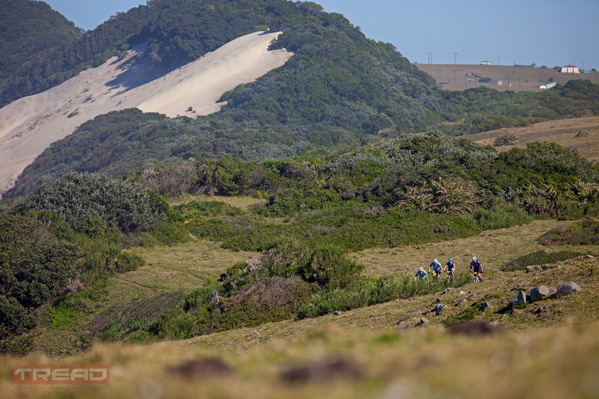
Somehow, we found ourselves five minutes in front of the race favourites at the finish of Stage 1 at Kob Inn. This is not false modesty, we were genuinely surprised to be leading. We thought we might be vying for the top positions, purely because Woodsy was in charge of navigation but the Imana Wild Ride is a race like no other. There are no route markings and therefore no set route. Just a promise that a secluded coastal resort awaited us at the end of each day. Yet Imana also requires strong cycling legs, a healthy jogging fitness and even swimming ability. We were equally surprised to have added another 2 minutes to our lead by the end of Stage 2 at The Haven resort. But on Stage 3 the raw power of eventual overall winners Warren Price and Trevor Rowe was laid down on the long gravel roads towards the finish.
To get wrapped up in the race for line honours is to miss the point. Whale blows dotting the sea. A herd of cattle blocking your path. Skimming across the deeper rivers aboard rickety fishing boats, bikes packed to the gunnels. The thrill of sneaking between rocks as a wave recedes only to see chasing teams up to their thighs moments later. There was so much going on around us I could have written a book on each day’s thrills. As a result, the camaraderie among riders at the end of each day is unlike any other race I’ve experienced. There was so much to analyse! Probably my only regret at Imana was hearing of the traditional swim stop at Hole in the Wall on Day 3. Next year.
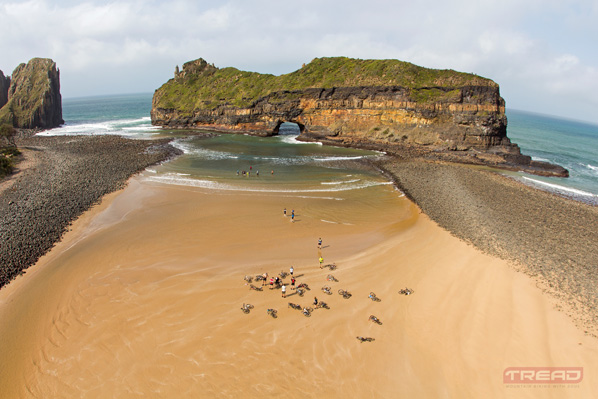
A big part of the race centres around the ‘sneaks’. Sneaks are closely guarded route choices that the best navigators deploy as the race unfolds, either to gain an advantage on fellow riders or to take them on a wild goose chase. Luckily Woodsy is a master of both, his other nickname is Captain Sneak. Throughout the four days he was calling them while I blindly followed: a 20-second shortcut across a football pitch here, a 15-minute bypass that saved us riding across a particularly washed out beach there or a sudden detour through someone’s chicken coop that dropped us onto a fast gravel road. On a few occasions we merrily rode along with others as Woodsy shot me a knowing wink – this was clearly the long way round. Sneaks also mean you are never confident of your position in the field as someone could crash out of the beach in front of you at any moment.
The standing advice is to ‘keep the ocean on your right’, but it’s said with a wink and a smile by race organisers and experienced teams. The glib one-liner doesn’t come close to describing the literally thousands of split-second decisions required throughout the day to keep heading in the right direction.
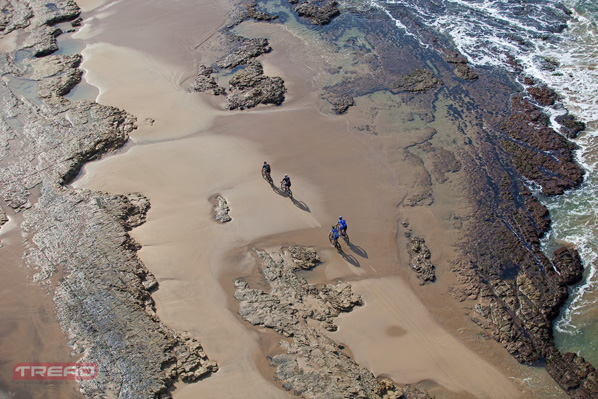
Every river, beach and gorge has an entry and exit point. Some of the softer sand is to be avoided altogether. The web of cattle trails stomped into the grassy hillside can speed up your passage, but you need to know when and where to double-back on yourselves to get back to the coast. Alleyways between holiday cottages or footpaths linking rondavel villages open up to rugged jeep track and even the occasional district road. A few rocky headlands are impenetrable, while others require a waist deep scramble against the rising tide to unlock the next section of riding – there’s almost no way to tell the difference between the two from a distance. Even as a nine-time Cape Epic finisher the river-crossings were a complete novelty to me. They involved swimming against a strong rip with our bikes bobbing along next to us.
And all of these landmarks change from year to year… or even day to day with the added complication of the tides. This year a beautiful and freakish blue moon offered mesmerising shows as it rose over the sea throughout our four-day adventure, but it also dictated our course. And we heard that nine inches of rain had fallen in the weeks leading up to the 2015 race, altering the river levels and scouring the beaches of sand.
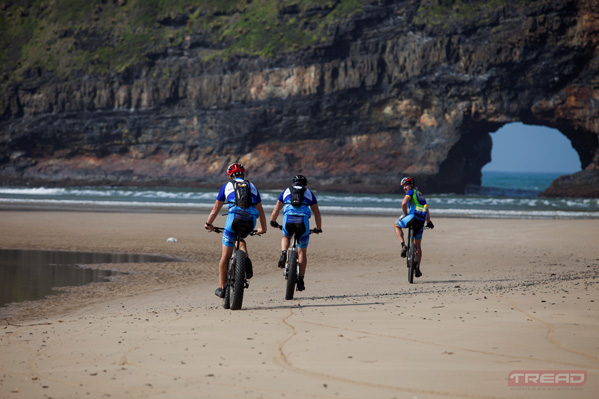
After four days of riding, the lingering thought is not of the brutality of the racecourse, nor its high-intensity riding. It’s the sheer privilege of cycling in this part of the world. The Imana Wild Ride is like an art house movie. Breakthrough performances from the organisers and cast of riders. Timeless moments lost in the wilderness with mates rejoicing in nature. With a big part of the attraction being that these intimate moments will never become mainstream, there just isn’t enough accommodation on the Wild Coast for the race to get bigger. Pedaling along a crashing surf line at sunrise with dolphins skipping through the waves is the stuff of Hollywood. At Imana it’s a daily reality for the lucky few.
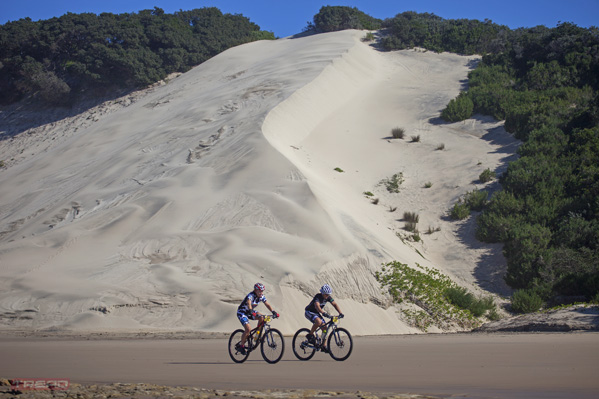
Imana-proof your bike
It’s difficult to understand the level of abuse a bike is subjected to at the Imana Wild Ride. Riding through sand and seawater is damaging to your bike. Doing it repeatedly throughout the day is downright torture.
- Marine grease everywhere – Strip your bike and replace all the grease with marine grease. It’s designed to repel water.
- Rinse daily – As soon as you’ve stopped riding, and before you clean yourself, wash your bike with fresh water.
- Lower tyre pressure – Find the sweet spot for your weight that will allow you to glide over sand, but also handle rocks. At 76kg I was running 1.2-1.3 bar (17-19psi)
- Top up sealant – Check it every day as water can seep into tyres and dilute the sealant.
- Avoid velcro – Sand plays havoc with velcro’s ability to stick to itself. Use shoes that tighten with a ratchet system.
- Strip it – As soon as you’re home pull your bike to pieces and soak everything in soapy degreaser and water.
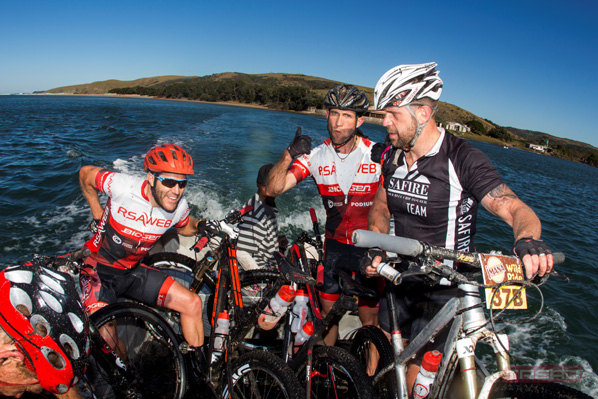
TREAD Magazine is sold throughout South Africa and can be found in: Spar, CNA, Exclusive Books, Discerning bike shops and on Zinio
*Originally published in TREAD Issue 37, Dec 2015 – All rights reserved



